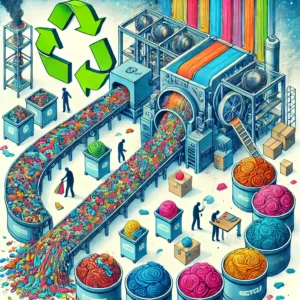To read the full article, please login. The full content of this article and all premium articles is available exclusively for site members.
Site membership is free. If you are an existing user, please login. New users may register below.
Will the textile industry move out of China?
Will the textile industry move out of China? The global textile industry may be at crossroads of change. Low cost based on cheap labour has been the main reason why the textile industry in China has enjoyed an extraordinary growth in the last two decades, and why the textile industry has declined sharply in the traditional markets in Western Europe and the US. But today China is not the cheapest producer any more. With the average wage of the 23 million textile workers in China reaching $600 a month, garment factory owners are starting to face great pressure as labour costs soar in China[1]. What is the alternative? Relocation to Africa and South East Asian countries, in terms of costs and market access, is proving more and more attractive for companies. Going Africa ? Some Chinese textile manufacturers have started moving to Africa. Xu Zhiming, chairman of Yuemei Group, a leading enterprise in the Chinese textiles industry and one of the largest importer and exporter, is quoted saying “Africa will definitely be the manufacturing center of the world in the future”[1]. Jiangsu Lianfa Textile Company Limited, has committed to build a large textile plant in Kenya. The investment is 500 mio USD. The textile factory will be one of the largest in the African continent and will create more than 30,000 jobs[2]. International retailers have started entering the African continent. Tesco announced to increase textile sourcing from Africa[3] The Swedish H&M is building a factory in Ethiopia[4]. The US company PVH, which produces labels like Calvin Klein and Tommy Hilfiger plans to start production in Kenya[4]. The Turkish garment manufacturer Ayka has also opened a branch in Ethiopia, in which it has invested US$ 160 million. It employs around 7,000 people and plans to scale up to 10,000[4]. Apart from Sub Saharan Africa, North Africa is seen as another important destination. In North Africa there is already a developed textile industry, e.g. in Egypt and Morocco[1]. Other industry leaders such as Hongkong based Esquel, a manufacturer of high-end shirts for international retailers such as Zara, Ralph Lauren, Tommy Hilfiger, Nike and others, do not think China’s textile industry has approached its sunset yet[1]. Instead of retreating from China, Esquel has planned major expansion in central China. The company plans to invest 325 million US$ to build a new factory in Guangxi Zhuang autonomous region. To judge all these developments, one has to understand the significance of China for the global textile market and the cost structures in the textile industry. The significance of China for global textiles According to the WTO statistics database of global trade [5], by 2013 the size of the global textile and clothing exports was 766 bio US$. China holds a commanding market share of 37% (284 bio US$) of global exports. That number alone shows the significance of China and what it means for the global textile business. China is far ahead of all its competitors. The second largest is India with 4.7% share only,



